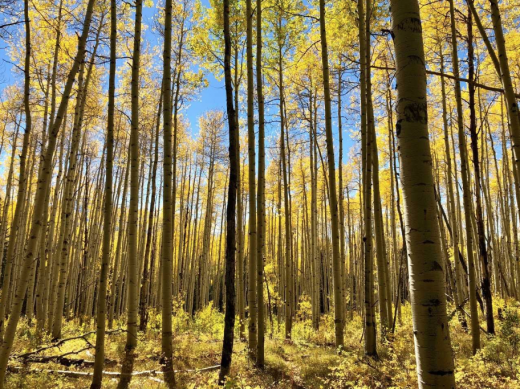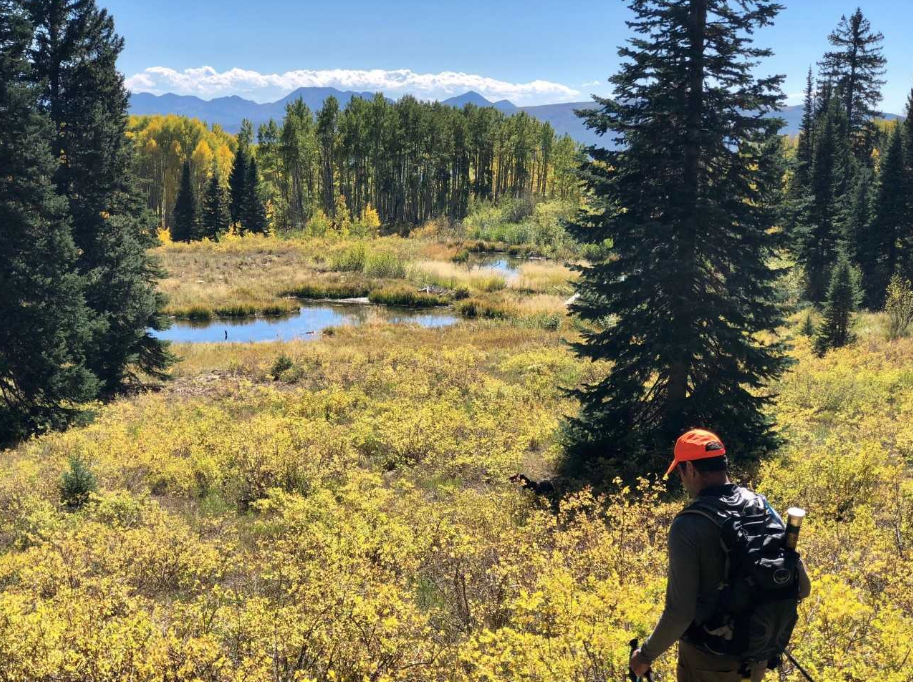By Scott Willoughby
In a landlocked rise of rock and ice, Thompson Divide flows like a vein of Colorado gold. Within its bounds lies a vast sweep of lustrous aspen groves and lush conifer forests surrounded by the iconic sentinel of Mount Sopris to the east, the towering Ragged Wilderness to the south and the verdant Grand Mesa to the west. Flanked by open, grassy meadows and cool, clean trout streams, the 221,000-acre backcountry expanse serves as one of the most pristine natural environments in the West, and among the most deserving of preservation.
Described as a “Colorado Crown Jewel” by Gov. John Hickenlooper himself, the rolling, mid-elevation backcountry is home to a rare combination of natural and recreational resources in the heart one the nation’s most popular outdoor playgrounds. Because it supports recreation, ranching and other local industries, the Thompson Divide produces an estimated 300 jobs and pumps more than $30 million into the local economy, much of it during the fall harvest and hunting seasons when the hillsides burst to life.
Critical keystone habitat supports some of the state’s largest herds of Rocky Mountain elk, mule deer and dozens of other species benefiting from one of the densest concentrations of roadless areas in the West. Native cutthroat trout line the vital cold water streams and ponds that continue to serve as a water source for the husky bruins hunted by conservation champion President Theodore Roosevelt more than 100 years ago.
A new chapter was added to this storied landscape recently when TU and a coalition of local government officials, businesses, ranchers, sportsmen and citizen groups successfully orchestrated the cancellation of 18 oil and gas drilling leases improperly issued in 2003 within Thompson Divide’s boundaries and settled a lawsuit challenging the cancellation last summer. The leases covered more than 21,000 acres (about 33 square miles), featuring prime big game habitat and native cutthroat trout streams in watersheds providing source water to the Crystal and Roaring Fork Rivers, as well as local communities.
But the battle is far from won.
Like the intricate ecosystem within it, the complexities of Thompson Divide are many. The area stretches across five counties and no fewer than nine national forest roadless areas within the White River, Grand Mesa, Uncompahgre and Gunnison National Forests. And while the fraction of improperly issued leases within the White River National Forest were cancelled last summer, nearly twice that many still remain under the jurisdiction of other management agencies, several of them inactive yet locked up since issuance as far back as 1996. And even the areas spared within the White River National Forest lack any sort of permanent protection.
So while the recent settlement is an important step toward protecting the region, it does not end the threat posed by oil and gas development, particularly within the headwaters of the North Fork of the Gunnison River. Colorado Sen. Michael Bennet introduced legislation last year (S.481— Thompson Divide Withdrawal and Protection Act of 2017) to permanently protect some 172,000 acres within the Thompson Divide, and with the specter of the 2003 leases and lawsuit no longer hanging over the area, TU has high hopes the bill can gain enough momentum to grant this treasured landscape the lasting protection it deserves.
 The bill would withdraw most of the Thompson Divide area west of Carbondale and south of Glenwood Springs from future oil and gas development, while also preserving existing private property rights for current leaseholders and landowners. The acreage to be withdrawn is based on requests and feedback from Garfield, Pitkin and Gunnison counties, as well as local oil and gas developer Gunnison Energy, which holds some of the leases in the area.
The bill would withdraw most of the Thompson Divide area west of Carbondale and south of Glenwood Springs from future oil and gas development, while also preserving existing private property rights for current leaseholders and landowners. The acreage to be withdrawn is based on requests and feedback from Garfield, Pitkin and Gunnison counties, as well as local oil and gas developer Gunnison Energy, which holds some of the leases in the area.
The most recent edition of the bill also includes provisions meant to promote the capture of energy from methane leaks into the atmosphere from old coal mines in the area. It aims to create a program to lease and generate energy from excess methane in existing and abandoned coal mines in the North Fork of the Gunnison Valley, on the southernmost reach of the Thompson Divide area.
To that end, TU will be joining a coalition of protection advocates from both sides of Thompson Divide for the second annual Stand at the Summit meeting atop McClure Pass from 5 to 7 p.m. on Friday, Oct. 5, and we invite you to come celebrate the season and support protection of our shared landscape in all its autumn splendor.
Organized and hosted by Wilderness Workshop, Western Slope Conservation Center and High Country Conservation Advocates, Stand at the Summit is a display of unity between the Roaring Fork and North Fork valleys, along with adjacent communities, in an effort to stop oil and gas development in the Huntsman Ridge, Clear Fork and Pilot Knob inventoried roadless areas within Thompson Divide. Hiking tours will explore the landscape throughout the day, including some fishing for those willing to work for it, followed by food, drinks, music and comments from community leaders around a cozy campfire.
While we may be separated by many miles, the geography of Colorado’s Western Slope is culturally and ecologically intertwined, and the impacts to our land, water, air and wildlife from unchecked development and extraction know no boundaries. We all deserve the responsible use, management and preservation of the public land, rivers and habitats that provide our communities with the pure water, clean air and abundant recreational opportunities we rely upon.
The work to preserve Thompson Divide won’t end until it’s protected in perpetuity through an act of Congress. Come stand with us at the summit and show your support. RSVP here.



